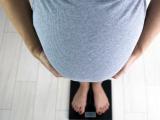Jun 13, 2012 (CIDRAP News) – The US National Institutes of Health (NIH) has announced the first major results of a 5-year project to identify and analyze all the bacterial species carried by healthy humans, revealing, among other things, that nearly all healthy people routinely harbor pathogens.
Whereas scientists previously had isolated only a few hundred bacterial species from the body, researchers involved in the Human Microbiome Project (HMP) now calculate that more than 10,000 microbial species occupy the body, the NIH said in a press release.
"We have defined the boundaries of normal microbial variation in humans," said James M. Anderson, MD, PhD, director of the NIH Division of Program Coordination, Planning and Strategic Initiatives. "We now have a very good idea of what is normal for a healthy Western population and are beginning to learn how changes in the microbiome correlate with physiology and disease."
About 200 members of the HMP Consortium will detail the fruits of 5 years of research in Nature and several journals in the Public Library of Science (PLoS) tomorrow, the NIH said. Close to 80 universities and institutions have been involved in the research.
The NIH said its Common Fund, which invests in high-impact, trans-NIH research, has poured $153 million into the project since 2007, and individual NIH institutes and centers have provided an additional $20 million.
Human cells outnumbered
Microbes in the human body number in the trillions, outnumbering human cells by 10 to 1, the NIH said. Though they make up only about 1% to 3% of the body's weight, they play a vital role in health.
To map the microbial population, researchers sampled 242 healthy US volunteers (129 male, 113 female), collecting tissues from 15 body sites in men and 18 body sites in women, the NIH reported. Researchers collected samples from each volunteer at sites such as the mouth, nose, skin, and lower intestine (stool), and three vaginal sites in women. "Each body site can be inhabited by organisms as different as those in the Amazon Rainforest and the Sahara Desert," the statement said.
Instead of using the painstaking process of isolating pathogens and growing them in culture, the researchers "purified all human and microbial DNA in each of more than 5,000 samples and analyzed them with DNA sequencing machines," the agency reported.
Using computers, the researchers sifted through vast amounts of genome sequence data "to identify specific genetic signals found only in bacteria—the variable genes of bacterial ribosomal RNA called 16S rRNA," the statement said.
"Focusing on this microbial signature allowed the researchers to ignore the human genome sequences and analyze only the bacterial DNA. In addition, metagenomic sequencing, or sequencing all of the DNA in a microbial community, allowed the researchers to study the metabolic capabilities encoded in the genes of these microbial communities."
Concerning the finding that nearly all the people sampled carried pathogens, the NIH said researchers must now figure out why some pathogens turn harmful and under what conditions, which will probably lead to revision of current concepts of how microorganisms cause disease.
Another finding was that microbes carry far more protein-coding genes responsible for human survival than humans contribute: about 8 million versus 22,000.
It's well known that bacteria help humans digest food. But beyond that, said Lita Proctor, PhD, of the NIH, "Microbes produce beneficial compounds, like vitamins and anti-inflammatories that our genome cannot produce.”
In other HMP findings, the NIH said:
- The vaginal microbiome undergoes a dramatic shift in bacterial species in preparation for birth, mainly involving decreased species diversity. Passage through the birth canal gives a baby its first dose of microbes, so it may not be surprising that the vaginal microbiome evolved to make it a healthy passage.
- Nasal samples from feverish children contained up to five times more viral DNA than did samples from children without fever, and the viral DNA represented a wider range of species.
See also:
Jun 13 NIH press release
http://www.nih.gov/news/health/jun2012/nhgri-13.htm




















